The market situation seems to be more significant than the points program itself.
Authored by: Three sigma
Compiled by: DeepTechFlow
This article provides a glimpse into our ongoing research on the points program. We have studied several protocols on the Solana network, comparing their characteristics to determine successful strategies and areas for improvement.
"The question of how much a user has contributed to the project provides a quantified answer," although this sentence has almost achieved meme-like status, its essence is still true. In contrast to previous systems, where users participated in protocols in anticipation of future rewards through airdrops, the points system distinguishes itself by providing a more specific concept. Although the exact value of points may not be clear, users can monitor the evolution of their holdings based on their interactions.
As argued by Arthur Hayes in his latest article, the main challenge facing new web3 projects is attracting users, which requires targeted efforts in marketing and business development, especially if the project lacks substantial venture capital. Implementing a points system can be an effective marketing strategy, particularly because it allows for flexible adjustment of the points-to-tokens ratio and incentivizes desired user interactions, unconstrained by a fixed token issuance schedule. This approach also appeals to retail users who are cautious about unlocking their venture capital, providing them with earlier investment opportunities and potentially better prices. However, the success of the points program depends on the trust between users and project founders. While it offers advantages in user participation and fundraising, the abuse of trust could undermine its effectiveness in the long run.
Let's explore the Solana ecosystem through the perspective of five protocols that have not yet launched their tokens: Zeta, Marginfi, Kamino, Drift, and Parcl (tokens have been launched as of the time of writing). As different types of protocols, each protocol aims to incentivize various user behaviors. The question is: how do they achieve this goal?
Transparency
Firstly, it is evident that these protocols have significant differences in transparency regarding their points programs and, in particular, the calculation methods.
Zeta demonstrates a commitment to transparency by providing detailed documentation outlining how each action contributes to a user's Z score, showing their commitment to transparency. Their first quarterly plan began around Solana Breakpoint 2023 and focused on rewarding providers until December 31, 2023. However, the second quarter, starting on January 10 this year, introduced content that rewards providers with Z scores, even if users experienced slippage in the Zeta market due to market order pressure, based on the feedback received in the first quarter. Additionally, due to the protocol's rapid growth, liquidity constraints arose, prompting the decision to incentivize idle market maker liquidity. It is worth noting that this transparent approach facilitated the integration of user feedback and drove the development of the plan.
However, at this stage, the method of converting Z scores into points is still unclear. What we know is that 10% of the total token supply will be allocated to holders who demonstrate long-term commitment to the protocol, with a significant portion reserved for active traders on the Zeta platform. The allocation for individual traders will be determined by two key factors: their Z scores and their long-term consistency with the protocol. The impact of Z scores on token distribution may follow a direct approach, directly related to the Z score value, or it may adopt a layered system based on specific Z score thresholds, or it may be a combination of both methods. While this introduces some ambiguity to the points system, the team's emphasis on extensive communication and transparency indicates a concerted effort to manage expectations effectively.
Marginfi also provides clear guidelines on how to earn points. However, details such as the duration of the program, the ratio of converting points to tokens, and the proportion of airdropped tokens allocated to points holders remain undisclosed. The Marginfi team defends this approach, claiming that providing precise criteria for airdrops and announcing snapshots in advance would be detrimental. They believe that this transparency may attract opportunistic capital, potentially undermining the efforts of early supporters who genuinely contribute to the project. Marginfi openly acknowledges that certain aspects of their points program are intentionally concealed to ensure that organic users are not harmed.
Kamino offers a comprehensive explanation of how users can earn points and allows users to observe their points balance in real time within the dApp, enhancing the user experience. These Kamino points will be distributed simultaneously with multiple rounds of KMNO token airdrops. The initial Genesis Drop is tentatively scheduled for the end of the first quarter or the beginning of the second quarter of 2024, although the protocol does not explicitly guarantee this timeline; it is aligned with the team's goals. After the Kamino Genesis event, 50 million KMNO tokens will be allocated to OG (pre-points) based on a layered distribution, accounting for 0.5% of the total supply, contributing to a 7.5% allocation for the total Genesis community.
Parcl's points program operates on a seasonal basis, with the first season starting on December 15, 2023. This program incentivizes traders and liquidity providers, with slight adjustments in fees between the first and second seasons, which began on January 26. The third season started on March 2, which should be the last season before the TGE. However, on March 19, Parcl introduced a new supplement to the points program: permanent points. This permanent incentive system aims to sustainably attract and engage liquidity providers, traders, and core community members. The permanent points will take effect after the end of the third season, including periodic allocations of network incentives.
Drift recently launched its points program, with the first points distributed on February 2, reflecting activity from January 22 to 31. The program includes weekly points allocations based on users' interactions with the protocol in the previous week. However, the method used to calculate points lacks clarity. 2 million points were allocated in the first week, distributed proportionally to users. Future allocations will prioritize trading activity while also rewarding other forms of participation. Drift states that the precise calculation method for points will be made public at the end of the program to prevent system manipulation and ensure fairness. The program is planned to run for a maximum of three months.
Rewarded Actions
Different protocols incentivize different actions for points. Taking Zeta as an example, it rewards not only trading volume but also considers PnL. Z scores derived from trading volume are directly calculated proportionally, while PnL is rewarded proportionally, with the multiplier depending on the trader's daily ranking. Although not operational yet, the documentation indicates that ongoing activities will also be recognized, with participation on a daily, weekly, or other specific time frame being considered.
Within Marginfi, users can accumulate points through borrowing, lending, or referring new users. Points accumulation is calculated daily, meaning increased lending activity leads to higher points earnings. Additionally, the duration of lending is correlated with higher points accumulation. To emphasize the importance of borrowing as a key driver of the success of the lending protocol, Marginfi allocates four times more points for borrowing activities compared to lending activities.
Kamino's points system implements different ratios and boosts for different types of assets and strategies, including collateral assets, debt assets, collateral and debt combinations, liquidity pool contributions, and automated strategies such as long and short and leverage betting (Multiply). Activities such as lending, borrowing, or providing liquidity to the pool typically earn users 1 point per dollar daily, while specific behaviors such as lending specific assets earn more points. Additionally, all holdings during the period from Kamino's launch in August 2022 to the launch of the Kamino Lend test version on October 20, 2023, will receive double points daily as a token of appreciation for early users (before the implementation of the points system).
Parcl's first-quarter traders earn one point per dollar of open interest contracts per day, while liquidity providers earn 3 points for every dollar deposited into the pool. The second quarter adjusts the points ratio to 4 points per dollar of LP per day and 2 points per dollar of open interest contracts per day. The second quarter also introduces a consistency snapshot, opening up points boosts for the most loyal Parcl traders, LPs, and eligible HOA holders (highest growth!). The third quarter promises more recognition for consistency and loyalty behaviors. Parcl increases the daily LP per dollar points to 5 points and the daily open interest contracts per dollar points to 2.5 points. Additionally, successful liquidations by technically skilled users will be rewarded with 50,000 points per successful liquidation, along with a new points boost structure and new boost tiers.
While there isn't much information about Drift's system, the first points distribution rewarded traders, MM, and DLP investors for their activities between January 22 and 31. Future points distributions will reward other activities. Trading on selected markets, such as SOL perpetual futures and spot trading, earns 5 times the points, and W perpetual trading earns 2 times the points at the time of writing.
Partnerships
An interesting aspect of these programs is the collaboration between protocols, especially with NFTs.
In Zeta, participating in NFT collaboration weeks or specific asset reward weeks can increase your Z score by up to 6 times. Holders of these NFT collections can enjoy special benefits throughout the season, increasing their potential to earn Z scores. They receive Z-Pass cNFT airdrops, which provide a 2x boost to their Z scores for 7 days when these cNFTs are burned. Each community in these collections also hosts its own "community week," during which holders receive a 2x increase in their Z scores. Zeta Cards introduces an innovative incentive program using compression on Solana, unique to the Solana ecosystem. The second season's Zeta Pass collection includes 10,000 collections, featuring 5 different types of Zeta Explorer, each providing various rare levels and boosts to the Z-Score in the second season. In the second season, Zeta also collaborates with Pyth and Backpack wallets. Users holding over $1000 will receive a 10% boost in Z scores, and users connecting to Zeta using Backpack will receive the same boost.
Marginfi recently introduced partnerships as a means to earn or increase points, particularly adding a 5% points bonus for Bagpack wallet users.
Kamino's documentation hints at providing boosts for activities outside the platform, such as operations performed on other Solana protocols or assets held in your wallet, although specific details have not been disclosed.
Users using at least one HOA NFT on the Parcl platform will receive additional points. Holding one NFT will gain a 20% points boost, and each additional NFT will add a 5% boost.
Social and Referrals
Social engagement, including interactions on social media and referral activities.
Recently, Zeta introduced a referral program in its second season of the points program. Users can now distribute their unique referral links to earn 10% of their referred person's trading fees and 10% of their Z scores. Referred users are also incentivized to use the referral link, as it permanently increases their own Z scores by 10%.
In Marginfi, referring users can earn 10% of the points earned by their referred users. Additionally, the referred users will receive 10% of 10% earned by their referred users. As more users continue to refer others, this cascades down the referral tree.
Kamino has indicated that a referral program will be launched soon.
Parcl recently introduced its referral program to complement the points system. By inviting others, you can receive 10% of the points accumulated by each referred user. Additionally, referred users will receive a permanent 5% points increase.
While Drift has maintained a long-standing referral program, it seems to be independent of its points program. Referrers will receive 15% of the fees generated by users they refer to Drift, while referred users will receive a 5% discount on their fees.
Measures Against Fake Trades and Wash Trading
While all protocols acknowledge the importance of addressing fake trades and wash trading, there is a lack of clear explanations for the specific measures to be implemented.
Kamino imposes some restrictions on airdrop activities, including limitations on the points earned by positions consisting solely of LST in both collateral and debt, as well as positions consisting solely of stablecoins on both sides.
Parcl explicitly prohibits self-referrals and emphasizes that points earned from such activities may be revoked. Additionally, Parcl provides a Discord process for users who wish to voluntarily disclose self-referrals, minimizing the risk of penalties.
Impact
When evaluating the impact of the points programs on protocol metrics, background analysis in the broader market is necessary to exclude the influence of external trends. The market has been on an upward trend for several months, attracting increased user participation, trading volume, and TVL. It is noteworthy that during this period, the Solana ecosystem has experienced significant growth.
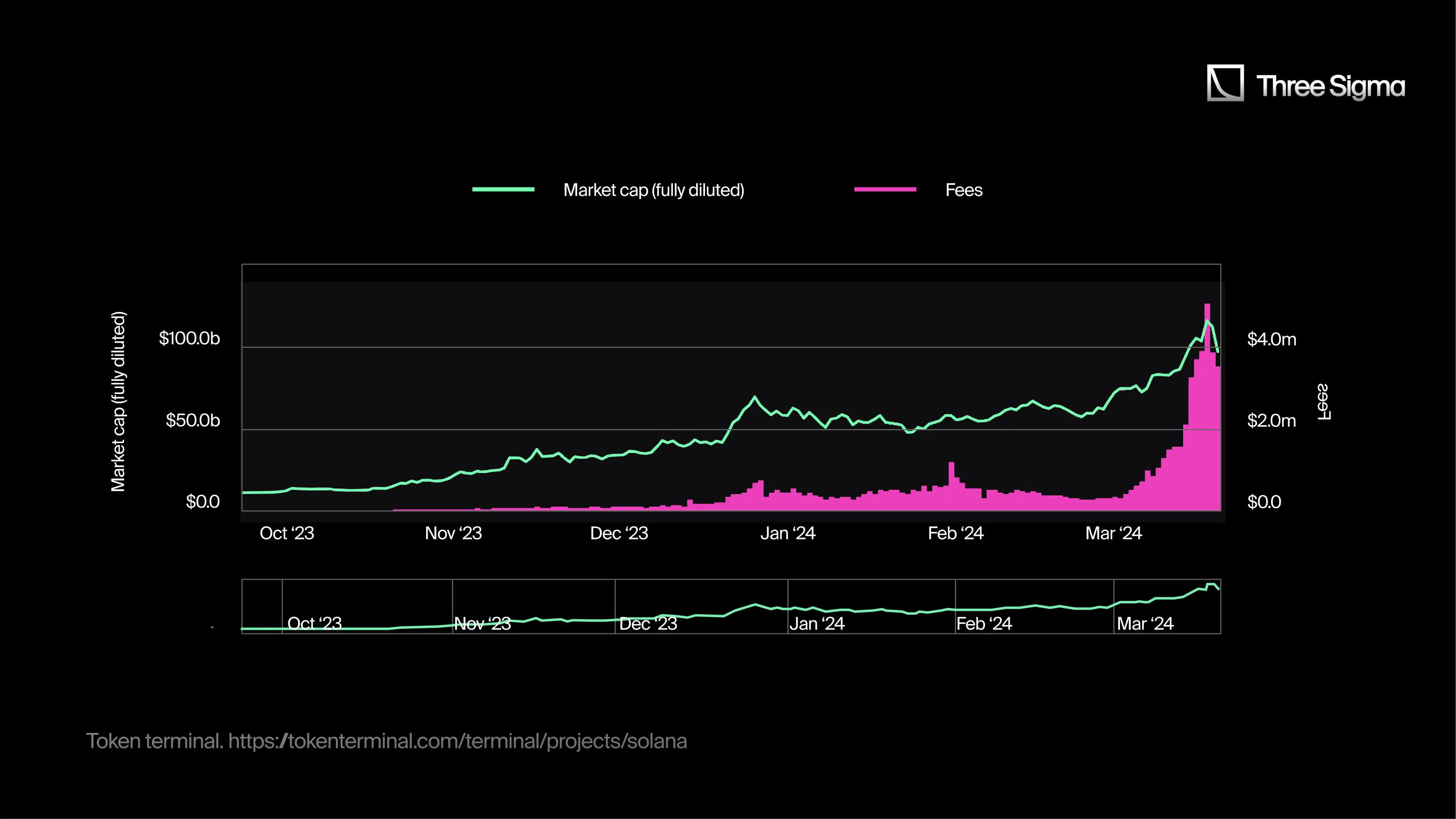
The Jito airdrop also contributed to a significant surge in Solana metrics, highlighting the profitability of pursuing airdrops. The airdrop was announced on November 25, 2023, and the claiming window was open from December 7, 2023. Users holding at least 100 points would receive a distribution of 80 million JTO tokens. With the TGE of Jito, the number of active addresses on Solana more than doubled in the following two weeks, increasing from approximately 413,000 on December 7 to about 981,000 on December 21.
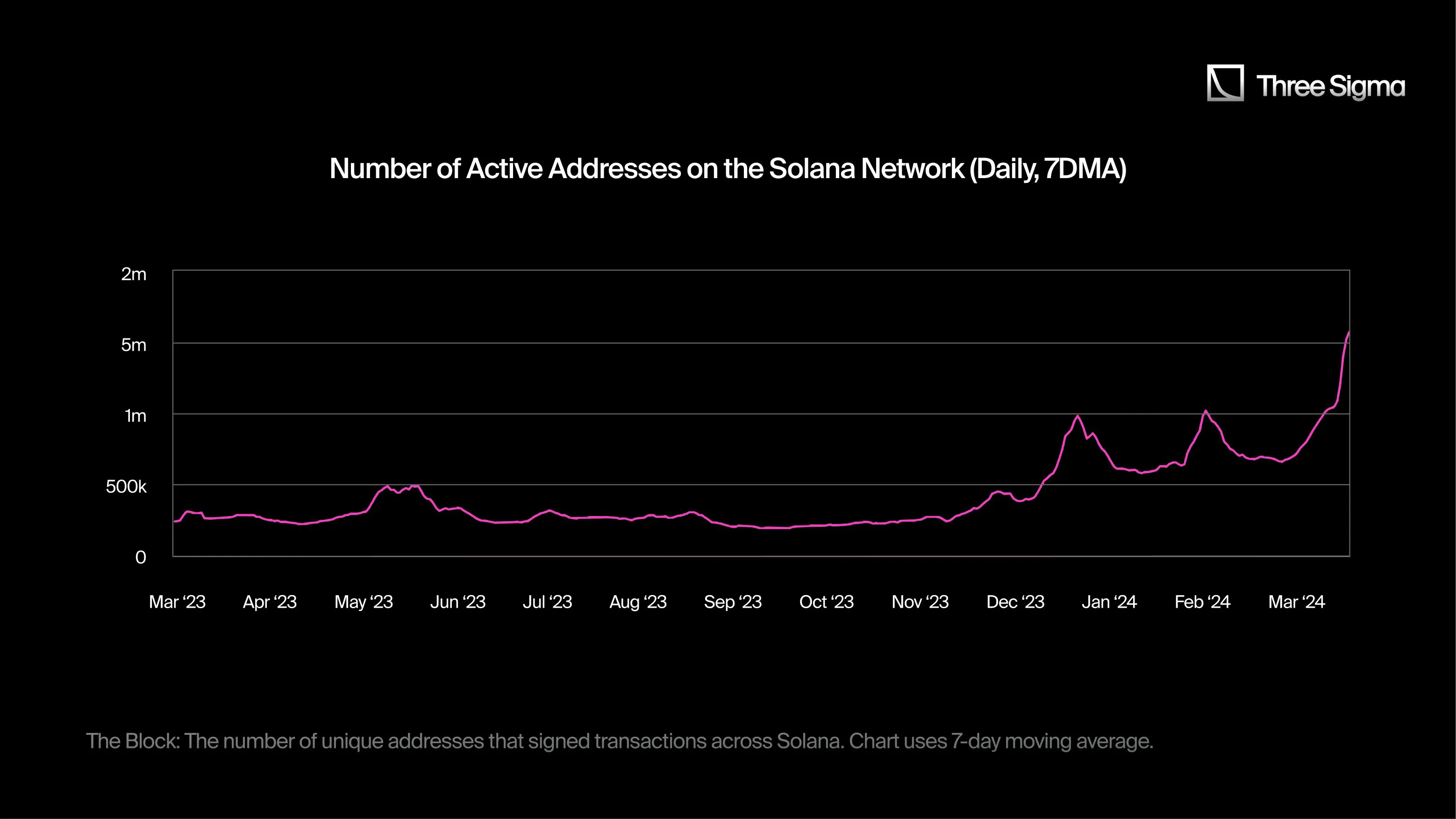
In the broader context, all five protocols benefited from increased attention, leading to a significant increase in TVL. However, what differences can we see?
Zeta's TVL initially experienced gradual growth, starting from nearly $1 million in early October to $2.8 million in early November, and reaching $6.5 million on December 7. Subsequently, TVL sharply increased, doubling in less than a week to reach $13 million on December 13. There was another rapid growth, with TVL skyrocketing by 100% to $133 million on December 31. In the early part of the following year, TVL remained relatively stable, ranging between $13 million and $14 million. Correspondingly, during the period of accelerated TVL growth, trading volume surged. The post-December 7 surge may be attributed to JTO's market debut. At this point, Zeta had launched its first-quarter points program, enabling itself to attract users seeking similar opportunities in the Solana ecosystem. Overall, during this surge, TVL increased by approximately 417%, from about $3 million to about $15.5 million. Interestingly, there was a noticeable TVL surge on March 20, likely due to the introduction of the referral system on that day.
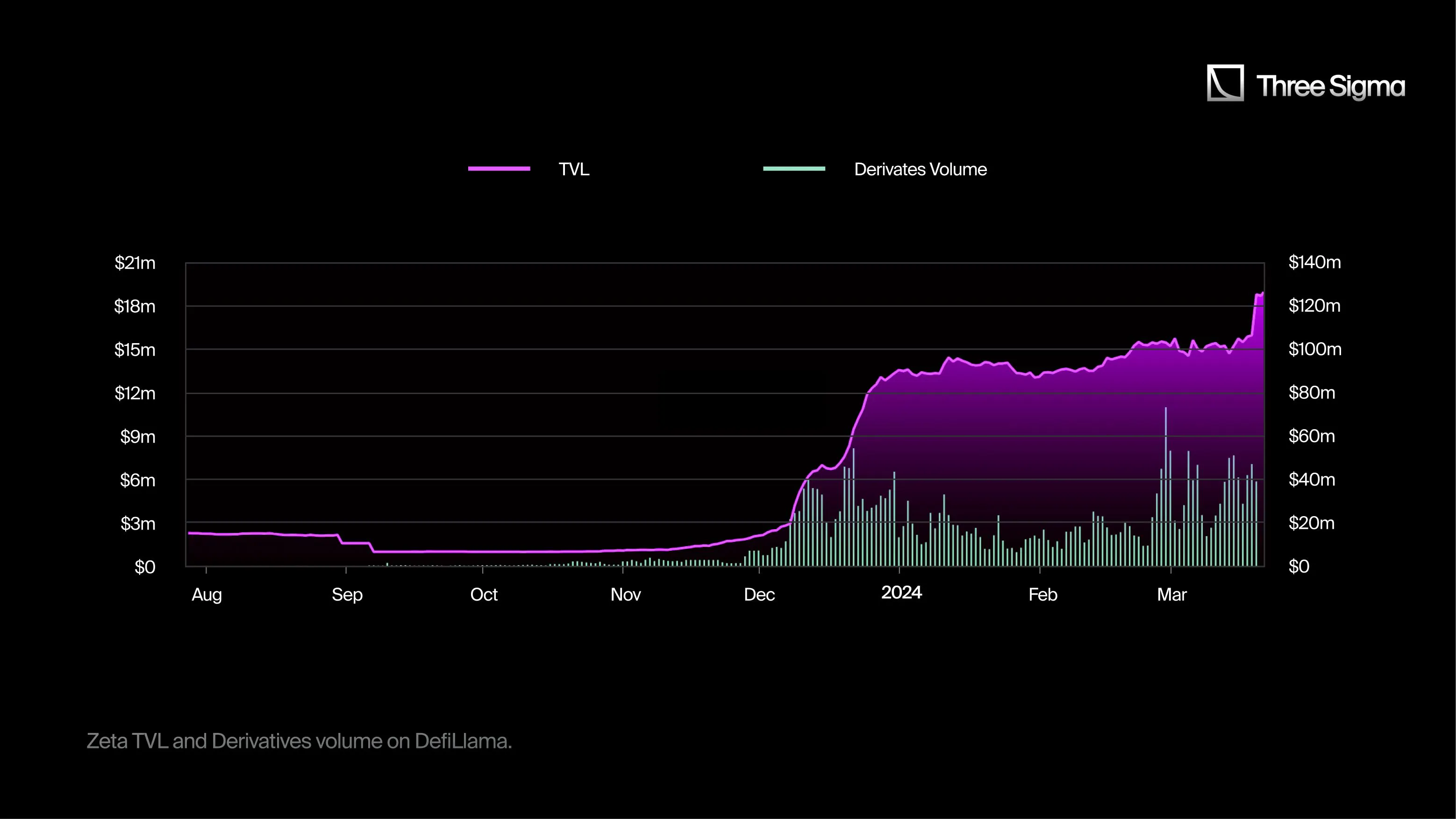
The development trajectory of Drift follows a similar pattern. On December 26, Drift's TVL reached a peak of $13.58 billion, a remarkable 517% increase from the TVL of approximately $22 million before November. Interestingly, despite the rapid growth in TVL, the release of the Jito airdrop does not seem to have had a significant impact. It is worth noting that Drift's points program only began at the end of January, indicating that the previous surge was driven by organic protocol expansion, increased market activity, especially within Solana, and anticipation for future points. Early February sparked a new wave of interest, leading to a significant increase in trading volume on the platform. Derivatives trading volume on February 2 increased from $132 million to $388 million on February 14, more than tripling in two weeks. Subsequently, TVL and trading volume continued to steadily rise. While Drift does not have clear guidelines on how user activity contributes to their points accumulation, users now see their allocations increase weekly, with the program expected to end no later than April.
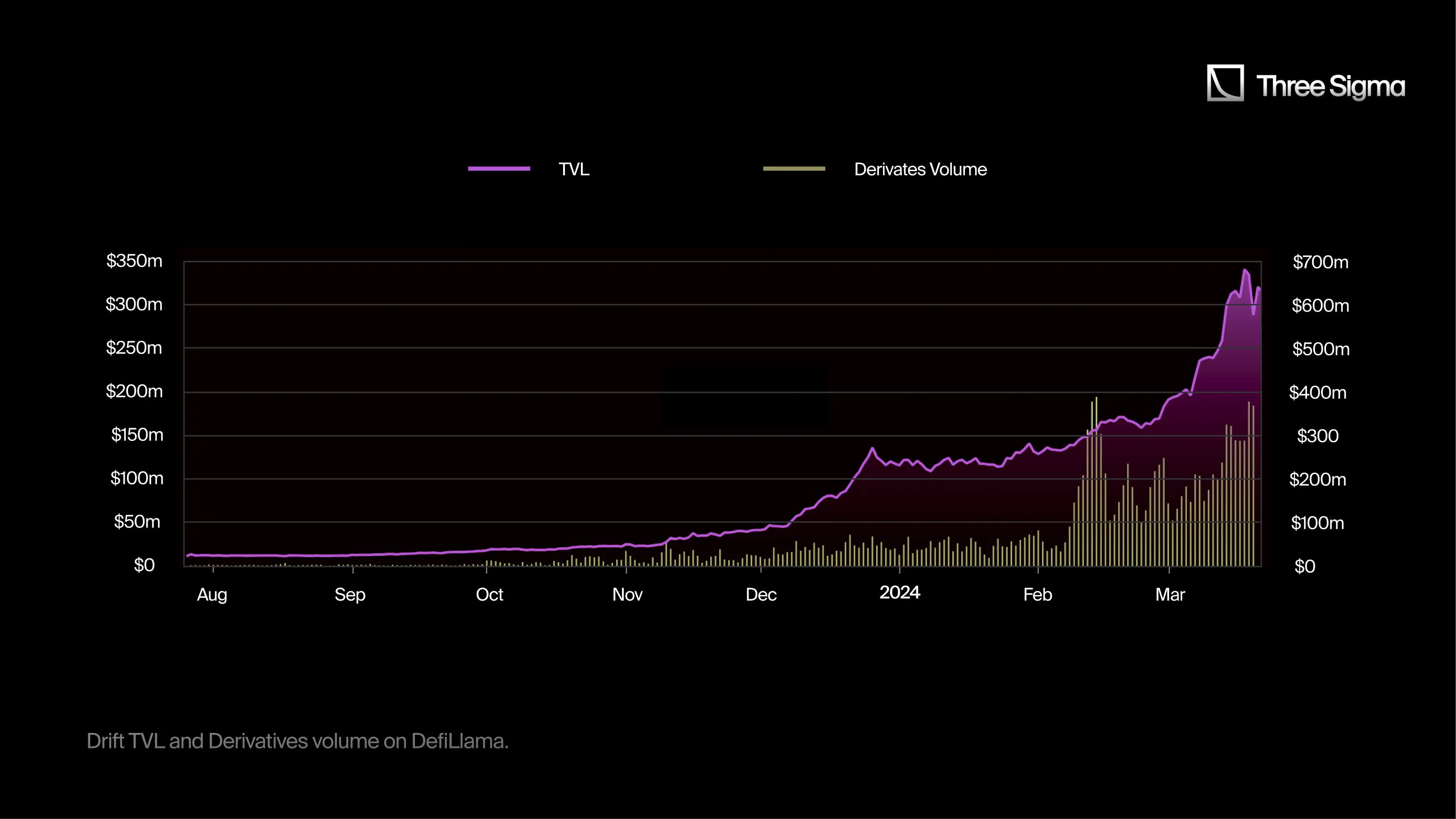
Marginfi experienced a TVL growth pattern similar to Drift but to a lesser extent. User deposits on the platform began before November, leading to an increase in TVL from approximately $25 million in early October to about $55 million on November 1. Like Drift, December 26 was the peak TVL for Marginfi, reaching $430.7 million—a significant 683% increase since November. In this case, while we aim to isolate the impact of the points program, it is important to acknowledge the platform's adeptness in attracting attention. The platform quickly opened deposits for new tokens, listing JTO on the day of its release. After a pause in TVL accumulation in January, deposits resumed from January 26. It is worth noting that Marginfi launched its points program as early as July 2023. This is strong evidence that mere points alone cannot attract attention; instead, a thriving ecosystem, market attention, and product-market fit are the true catalysts for success.
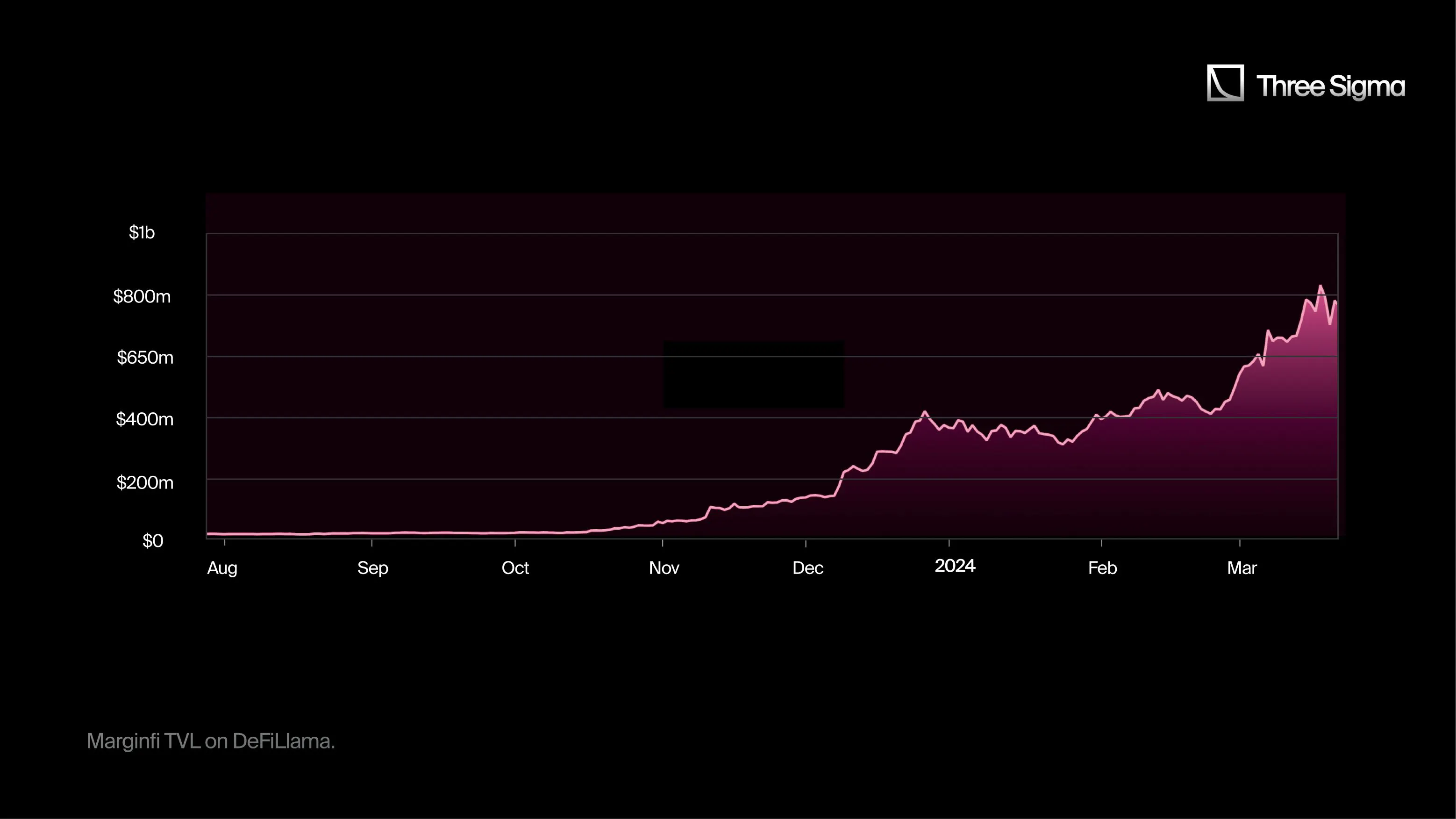
Kamino's TVL growth follows a similar pattern, albeit starting later. In early November, the platform had only about $12 million, gradually increasing to $48 million on December 7, the day of the Jito airdrop. This event seemed to accelerate the pace of deposits, leading to a peak TVL of $248 million on December 26. This represents a growth of approximately 1967% since November 1. After a relatively stable month, TVL began to grow again at the end of January, likely influenced by the announcement of the points program, and the platform now has approximately $430 million. In fact, Kamino did not announce its points program until January 19, and although the platform has seen significant growth since then, it still seems to have had a positive impact, increasing by 73% since the local high point on December 26. While the sustained popularity in February is impressive, the performance in March is even more remarkable. Especially on March 6, Drift's TVL was about $527 million, and on March 8, this figure jumped to $692 million, a 31% increase in just two days. This may be due to a statement from X, which stated that the first-quarter snapshot would take place on January 31. This is not really news, as Kamino has always stated that the first quarter will last for 3 months and peak during the airdrop. However, it clearly served as a reminder for those who had not yet tried the platform. In the following days, this sparked some attention and discussions on X, prompting the team to release more announcements about the airdrop and points mechanism, further capturing the attention of newcomers. This ultimately led to an impressive TVL of $1.2 billion as of March 18.
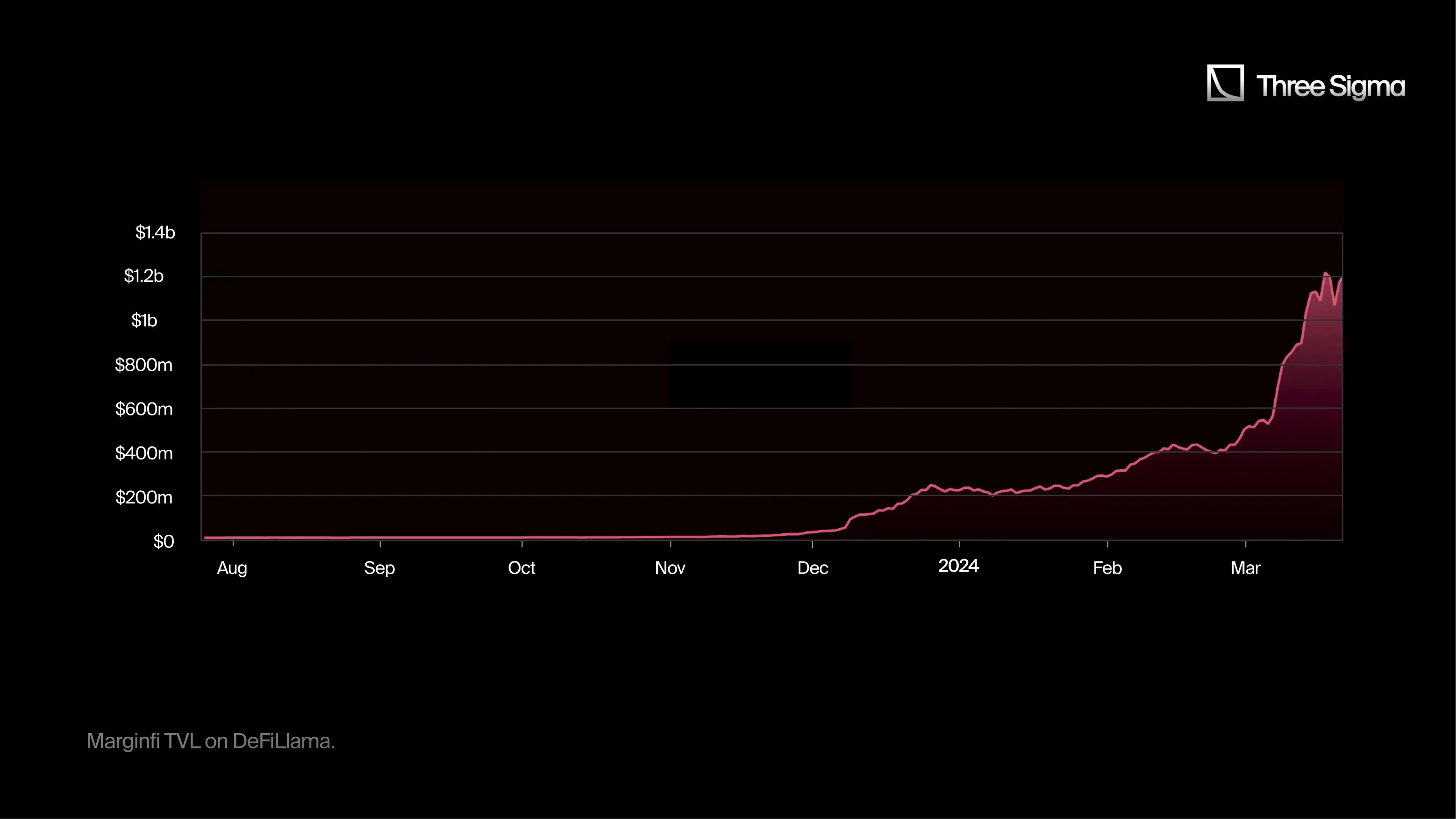
Parcl is a unique project that offers real estate price trading for its users. Despite some inaccuracies in the TVL description in the DefiLlama, it is clear from the nominal trading volume below that the project has benefited from similar growth dynamics observed in other protocols mentioned here. While users have been earning points for their activities, the comprehensive display of points was announced to take effect on December 15. Since then, trading volume has steadily increased, with significant fluctuations in activity. Particularly notable is the surge from $6.6 million on February 25 to $31.5 million the next day, coinciding with Aevo's announcement of the PARCL presale futures.
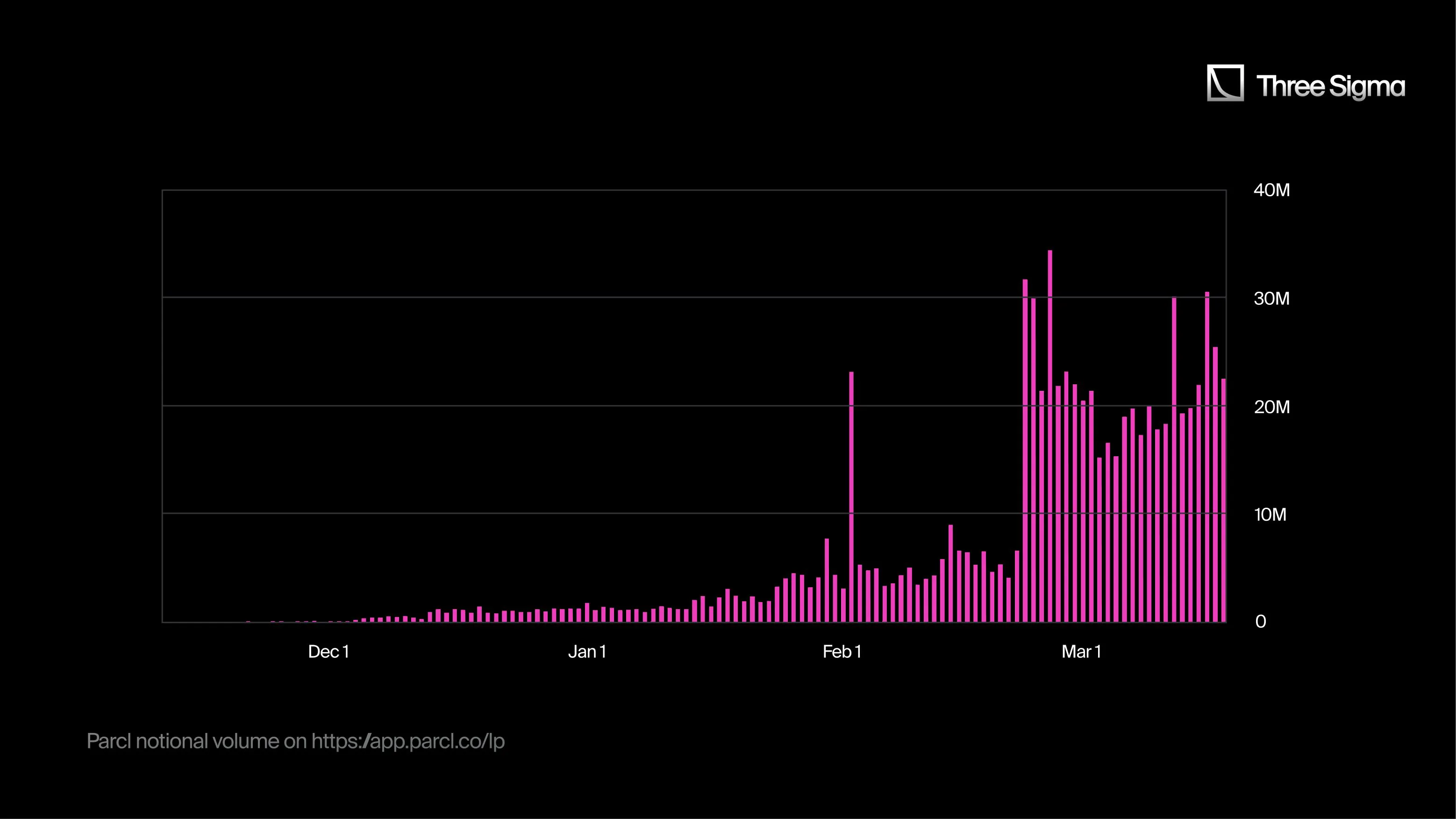
Key Points
Many protocols are currently discussing partnerships with other projects, although specific details about how referrals are expected to contribute to points are currently lacking. However, it is expected that this trend will have a net positive impact on the space, as users recognize the benefits of interacting with multiple projects within the ecosystem.
Most programs operate in seasonal cycles, using each season as an opportunity for learning and adaptation. For example, Kamino outlines that each season will have different durations, new mechanisms, unique airdrop plans, and different allocations. Zeta successfully adjusted its approach to accommodate increased liquidity demand. Flexibility is crucial for projects, as points may unpredictably impact protocol metrics or lead to sudden growth surges.
An interesting observation is that market conditions seem to be more significant than the points programs themselves. For example, despite Drift and Marginfi launching their points programs at different times, their TVL charts are almost identical. While Drift does not provide a description of how to earn points, and Marginfi does, this difference seems to have almost no impact on TVL. Nevertheless, the positive presence of the points program, along with marketing efforts such as weekly airdrops, still holds significance, as evidenced by the increase in trading volume after Drift's initial announcement.
Even for projects like Parcl, where the product-market fit is not as apparent, the anticipation of tokens can significantly boost metrics and drive adoption. The positive impact of referrals is noteworthy, as seen in the increase in TVL for Zeta after the introduction of this mechanism.
As the points programs come to an end, protocols are becoming more vocal about their plans to further attract users. Parcl has introduced permanent points, while Kamino is gearing up for the upcoming season, providing tailored strategies to maintain user engagement.
Overall, most projects seem to unanimously prioritize clarity and transparency while retaining flexibility. Effective marketing also plays a crucial role in the success of projects. However, attributing the improvement in metrics solely to new mechanisms in the points system may be challenging, as these improvements are often influenced by marketing efforts aimed at spreading awareness.
免责声明:本文章仅代表作者个人观点,不代表本平台的立场和观点。本文章仅供信息分享,不构成对任何人的任何投资建议。用户与作者之间的任何争议,与本平台无关。如网页中刊载的文章或图片涉及侵权,请提供相关的权利证明和身份证明发送邮件到support@aicoin.com,本平台相关工作人员将会进行核查。




